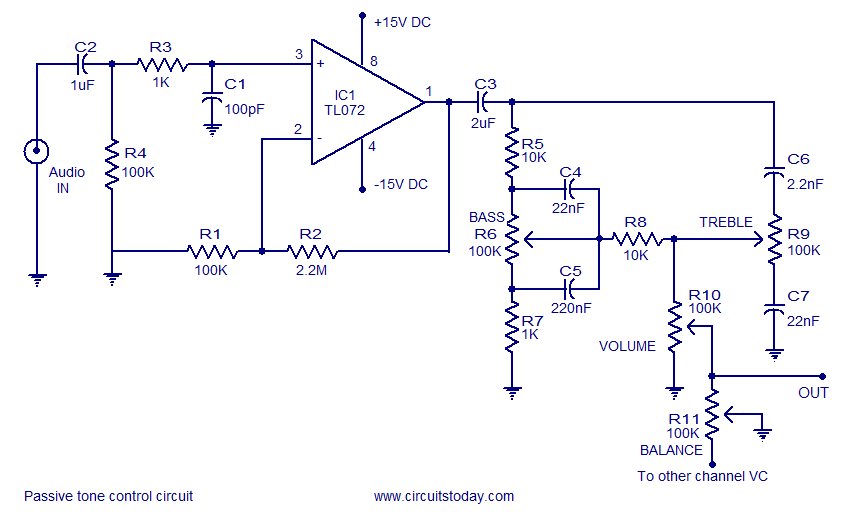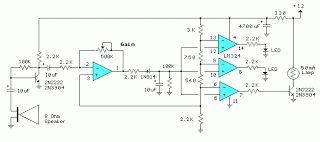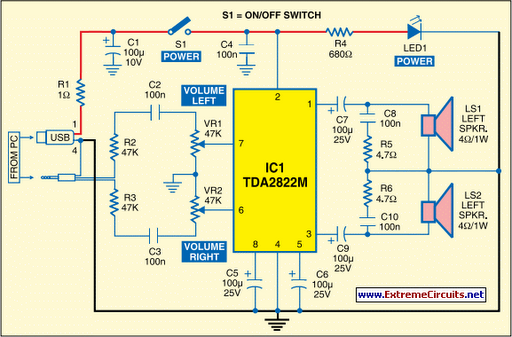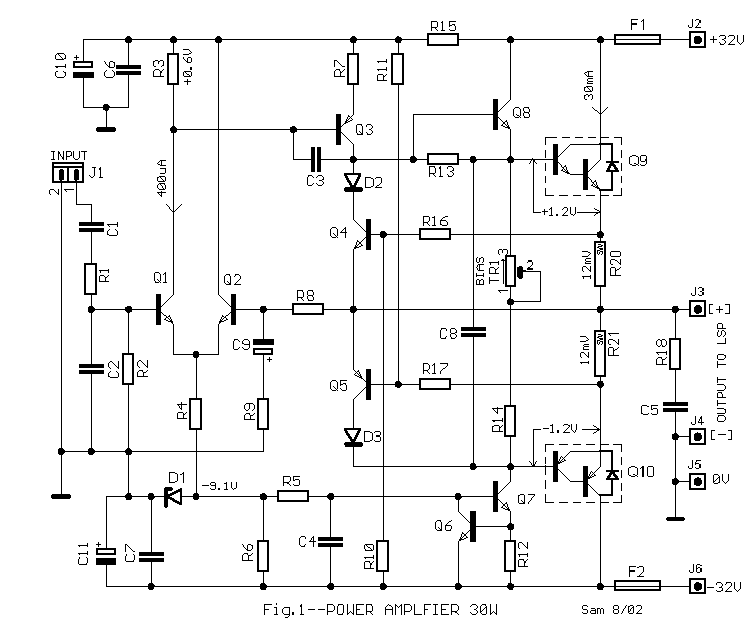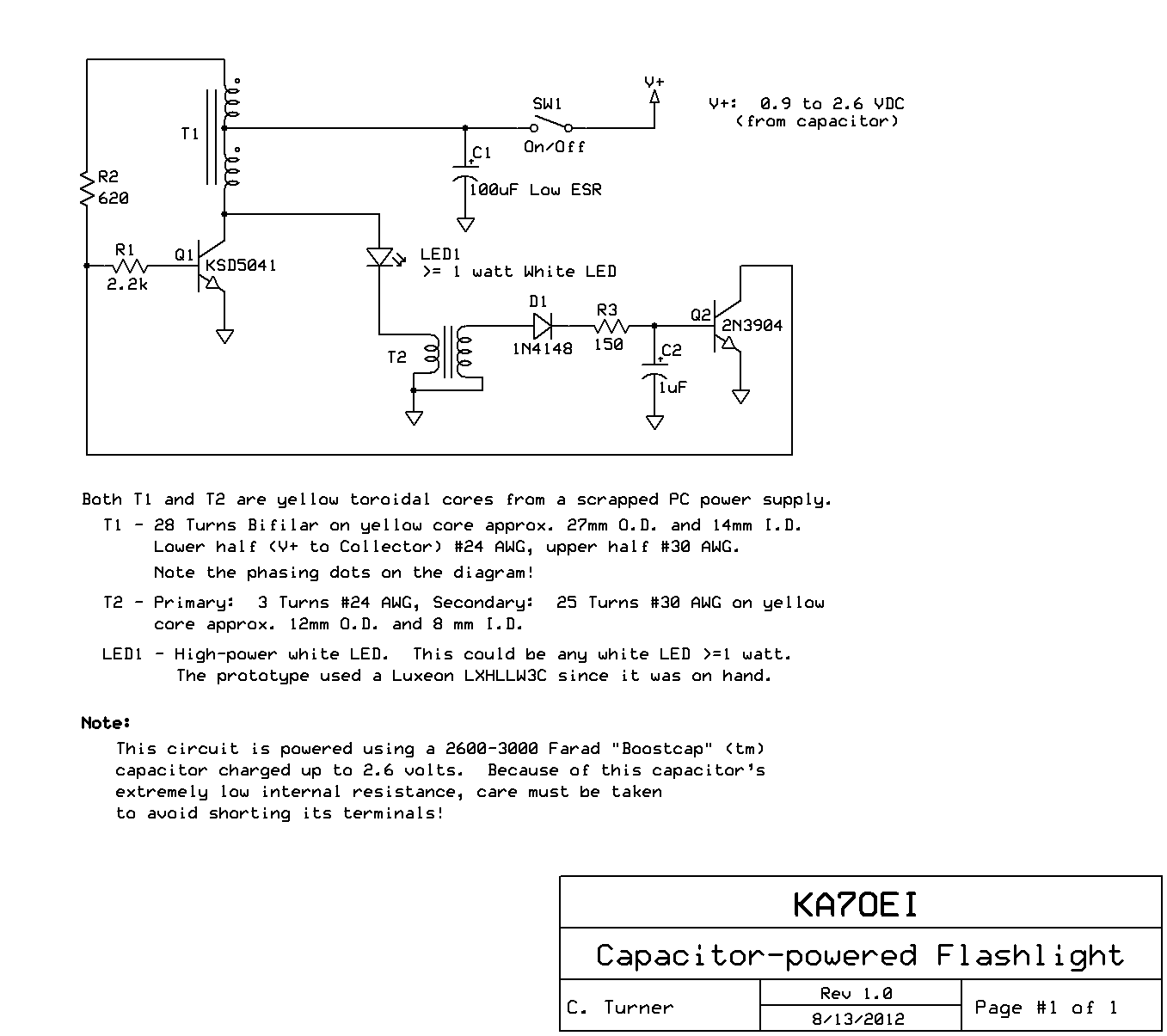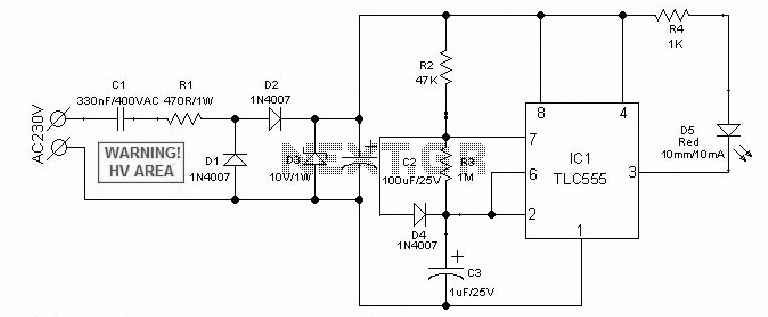
Digital 5V Power Supply using L296
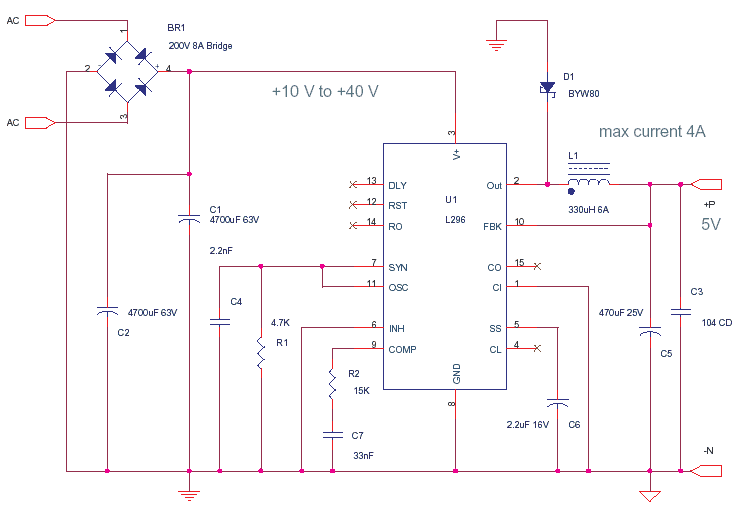
This circuit is based on the application note for the L296, a Power Switching Regulator from ST. The primary benefit of utilizing a switching regulator is the minimal heat dissipation observed in this design. In contrast, implementing a series regulator would necessitate a larger footprint due to the inclusion of an external transistor and a substantial heat sink. This circuit occupies a small area on the PCB, demonstrates high efficiency, conserves power, and enhances product reliability. Additionally, it mitigates thermal gradients within the enclosure, thus reducing the likelihood of drift or variations in component specifications. The Schottky rectifier BYW80 is employed due to its rapid switching capabilities, rated at 200V, 20A, and 35ns. The inductor and capacitor serve as filters to produce a ripple-free DC output from the chopped DC signal. It is common for a small high-frequency ripple to be present on the 5V DC output in many switch-mode power supply (SMPS) circuits; therefore, for sensitive applications, additional filters and shielding are recommended. The output current is limited and can be further decreased by adding a resistor from Pin 4 to ground. Moreover, if feedback to Pin 10 is provided through a voltage divider, the output voltage can be adjusted accordingly. For further design details and circuit examples, refer to the datasheet and application notes.
The L296 Power Switching Regulator circuit is designed to efficiently convert input voltage to a stable output voltage while minimizing thermal output. The circuit typically consists of several key components: the L296 IC, a Schottky rectifier (BYW80), an inductor, a capacitor, and additional filtering components as required.
The L296 IC is the heart of the circuit, functioning as a switching regulator that rapidly turns the input voltage on and off, effectively controlling the output voltage. The Schottky rectifier is crucial for its fast switching characteristics, which help in reducing power losses during the rectification process. The inductor stores energy when the switch is closed and releases it when the switch opens, smoothing out the output current. The capacitor further filters the output, ensuring a steady DC voltage with minimal ripple.
To enhance performance, especially in sensitive applications, additional filtering stages can be implemented. This may involve using LC filters or RC filters to attenuate any high-frequency noise that may remain after the initial filtering. Shielding techniques can also be employed to protect against electromagnetic interference (EMI).
The output current limitation feature allows for safe operation of the circuit under varying load conditions. By connecting a resistor from Pin 4 to ground, the current output can be adjusted to meet specific application requirements. The feedback mechanism via Pin 10 enables precise voltage regulation; by using a voltage divider, the output voltage can be fine-tuned to desired levels.
Overall, the L296 circuit exemplifies an efficient and compact solution for power regulation, suitable for a wide range of electronic applications where reliability and performance are paramount. For comprehensive design guidance, it is advisable to consult the manufacturer's datasheet and application notes, which provide detailed specifications and additional circuit configurations.This circuit is derived from an application note of L296, It is a Power Switching Regulator from ST. The advantage of using a switching regulator is that there is not much Heat Dissipation in this circuit. If you had to build the same with a series regulator, it would be very big due to external transistor and a huge heat sink.
This circuit takes a small place on PCB, efficiency is high so power is saved and reliability of product improves, lastly the thermal gradients within the cabinet is avoided so that any form of drift or component specs variation can be avoided. The Schottky rectifier BYW80 is used as it switches very fast 200V-20A-35nS. The Inductor and Capacitor is for the filter to get a ripple free DC from the Chopped DC output. There may be a small high frequency ripple riding on the DC signal of 5V in most SMPS circuits. So for very sensitive circuits use extra filters and shields. The Current output is limited, and can be reduced further with a resistor from Pin 4 to ground. Also if the feedback to Pin 10 is thru a Voltage Divider then more voltage can be set at the output. See the datasheet and application notes for other design details and circuits. We aim to transmit more information by carrying articles. Please send us an E-mail to wanghuali@hqew. net within 15 days if we are involved in the problems of article content, copyright or other problems.
We will delete it soon. 🔗 External reference
The L296 Power Switching Regulator circuit is designed to efficiently convert input voltage to a stable output voltage while minimizing thermal output. The circuit typically consists of several key components: the L296 IC, a Schottky rectifier (BYW80), an inductor, a capacitor, and additional filtering components as required.
The L296 IC is the heart of the circuit, functioning as a switching regulator that rapidly turns the input voltage on and off, effectively controlling the output voltage. The Schottky rectifier is crucial for its fast switching characteristics, which help in reducing power losses during the rectification process. The inductor stores energy when the switch is closed and releases it when the switch opens, smoothing out the output current. The capacitor further filters the output, ensuring a steady DC voltage with minimal ripple.
To enhance performance, especially in sensitive applications, additional filtering stages can be implemented. This may involve using LC filters or RC filters to attenuate any high-frequency noise that may remain after the initial filtering. Shielding techniques can also be employed to protect against electromagnetic interference (EMI).
The output current limitation feature allows for safe operation of the circuit under varying load conditions. By connecting a resistor from Pin 4 to ground, the current output can be adjusted to meet specific application requirements. The feedback mechanism via Pin 10 enables precise voltage regulation; by using a voltage divider, the output voltage can be fine-tuned to desired levels.
Overall, the L296 circuit exemplifies an efficient and compact solution for power regulation, suitable for a wide range of electronic applications where reliability and performance are paramount. For comprehensive design guidance, it is advisable to consult the manufacturer's datasheet and application notes, which provide detailed specifications and additional circuit configurations.This circuit is derived from an application note of L296, It is a Power Switching Regulator from ST. The advantage of using a switching regulator is that there is not much Heat Dissipation in this circuit. If you had to build the same with a series regulator, it would be very big due to external transistor and a huge heat sink.
This circuit takes a small place on PCB, efficiency is high so power is saved and reliability of product improves, lastly the thermal gradients within the cabinet is avoided so that any form of drift or component specs variation can be avoided. The Schottky rectifier BYW80 is used as it switches very fast 200V-20A-35nS. The Inductor and Capacitor is for the filter to get a ripple free DC from the Chopped DC output. There may be a small high frequency ripple riding on the DC signal of 5V in most SMPS circuits. So for very sensitive circuits use extra filters and shields. The Current output is limited, and can be reduced further with a resistor from Pin 4 to ground. Also if the feedback to Pin 10 is thru a Voltage Divider then more voltage can be set at the output. See the datasheet and application notes for other design details and circuits. We aim to transmit more information by carrying articles. Please send us an E-mail to wanghuali@hqew. net within 15 days if we are involved in the problems of article content, copyright or other problems.
We will delete it soon. 🔗 External reference
